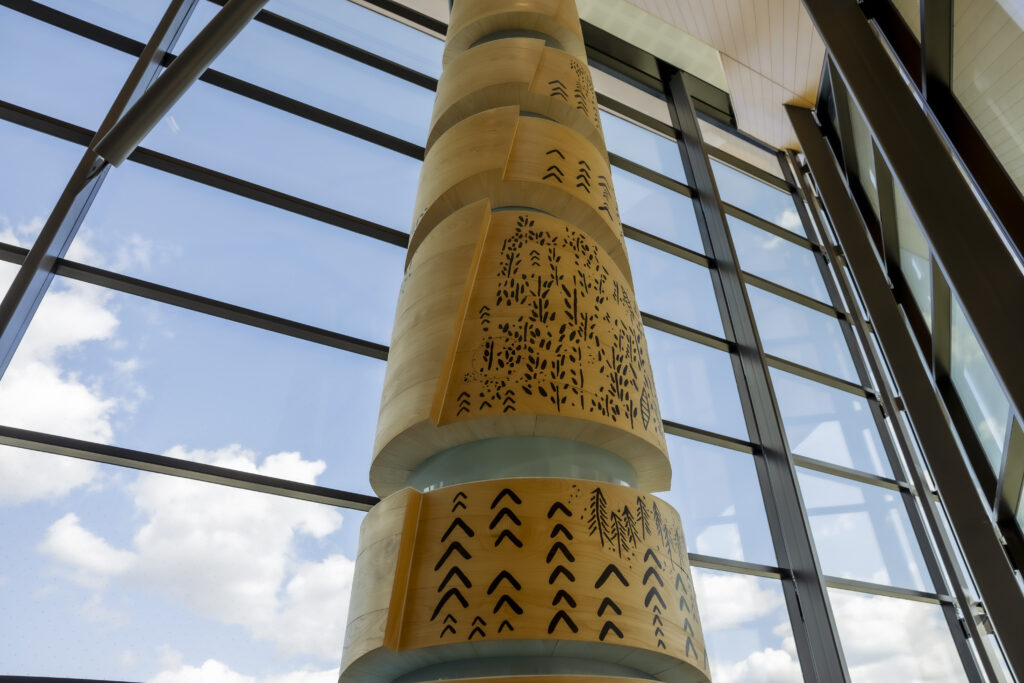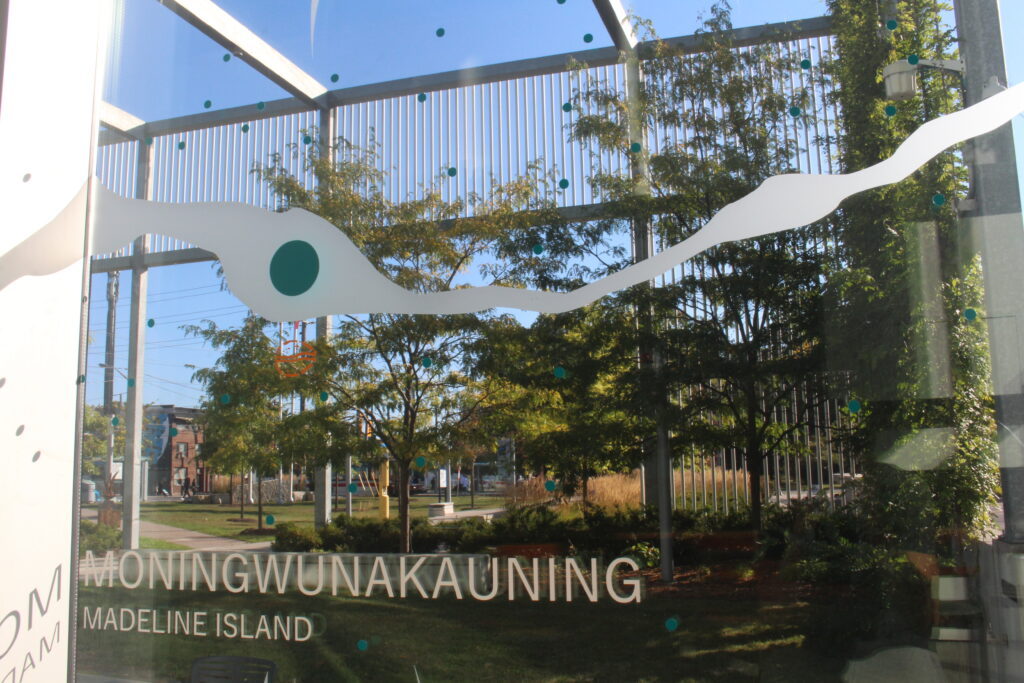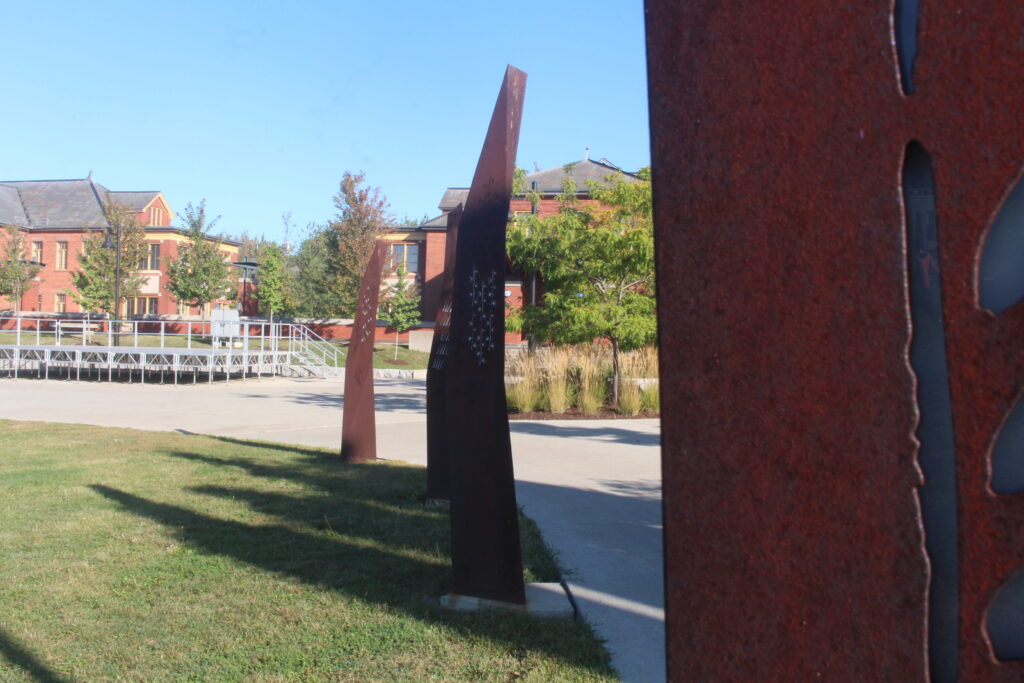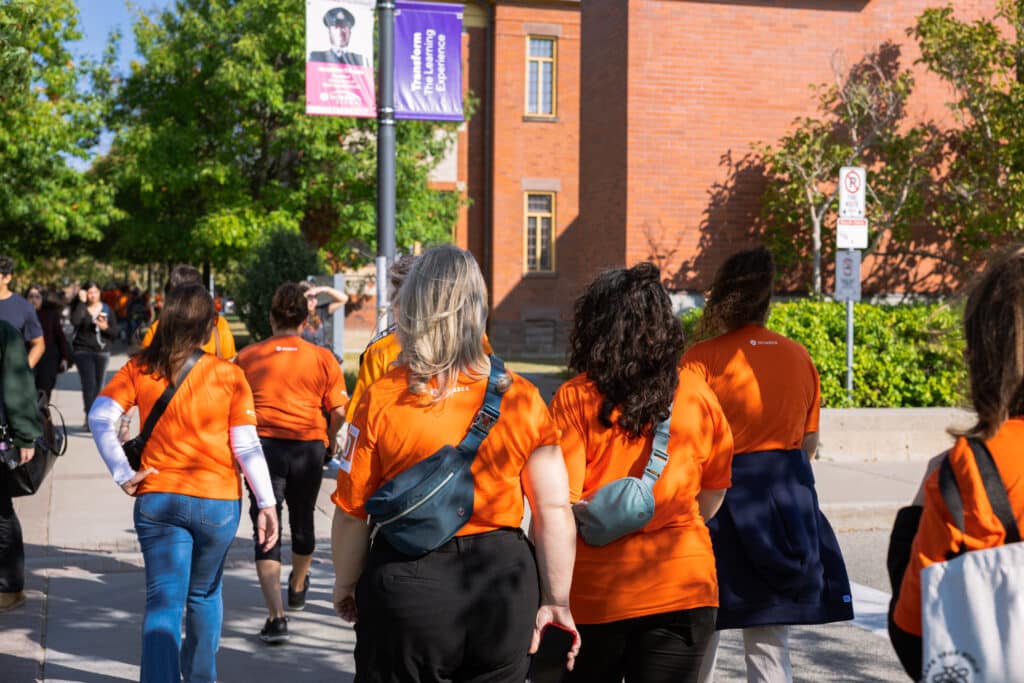Preserving the rich Indigenous heritage on campus.
Boozhoo students!
Boozhoo means greetings in the Ojibwe language, one of the Indigenous languages.
Humber College and the University of Guelph-Humber are located within the traditional and treaty lands of the Mississaugas of the Credit in Adoobiigok [A-doe-bee-goke], known as the “Place of the Elders.”
The area holds a unique position along the Humber River, historically serving as an integral connection for Indigenous Peoples between the northern shore of Lake Ontario and the Lake Simcoe Georgian Bay region. Now, home to numerous nations, Adoobiigok continues to provide a vital source of interconnection for all.
Did you know that both Humber College’s North and Lakeshore campuses feature many Indigenous markings that honour the land we occupy?
These markings are dedicated to provide historical education and knowledge about the Indigenous Peoples. IGNITE is committed to raising awareness about this country’s history and the land we inhabit.
Let’s explore the locations and history of the Indigenous markings on our campuses:
Anishinaabeyaadiziwin Miikana

Located at the Barret Centre for Technology Innovation at the North campus, Anishinaabeyaadiziwin Miikana represents the seven Fires of Creation, linked with the seven Stages of Life as recounted in the story of the Anishinaabe Life Path.
The Anishinaabe Path of Life speaks to us of our creation, journey and destination. When we enter this world we are given gifts, and how we develop and share those gifts is our choice.
The seven Fires of Creation precede the arrival of humans in this world:
- Thought – all the thoughts of creation.
- Sun.
- Moon/Water.
- Universe – Motion.
- Seeds of Life.
- Earth.
- Human beings.
The Path of Life teaching leads us back to the beginning of the road – the path that was given to us by the Creator. The 7 Stages of Life, which are:
- The Good Life.
- The Fast Life.
- The Wandering/Wondering Life.
- The Truth Life.
- The Planning Life.
- The Doing Life.
- The Elder Life.
The installation includes programmable lighting that can be curated for events, teachings or to mark seasonal shifts like the solstice or equinox. Users have control over aspects like color selection, speed, and intensity.

The Great Migration

According to the prophecies, the Anishinaabe Nations, who previously resided on the Eastern shores of Turtle Island, left their homes to make a “Great Migration” following the waterways “flowing from the West.”
The point of origin on the East Coast, known as “Chi-Ahkee” (The Big Earth or the Great Land). The people who stayed behind “to keep the Eastern fire burning” became known as “Waubunahkeeyug” (people of the Dawnland).
It’s said that they followed the “Sacred Shell” who led them along the St. Lawrence River, through the Great Lakes, finishing the migration at the Western end of Ojibwe Gitchi-Gameh (today’s Lake Superior) where they found the “food that grows on water” (wild rice).
The journey, which took many generations, had seven stops – which became known as “the seven major stopping places.”
Across the Lakeshore campus, you can find many markings that represent the Migration of the Anishinaabe.

The Courtyard Trail
Along this trail, you’ll find eight stops that symbolizes different areas of the migration and provide insight into the regions’ original names. The trail is located at the Lakeshore Campus.
Gabekanaang-ziibi “leave the canoes and go back”

Gabekanaang-ziibi refers to the Mouth of the Humber River at Lake Ontario. Today, the area is categorized by a natural marshland shoreline and a low beach that would have acted as a landing space for canoes since the banks are muddy and high upstream.
Adoobiigok, Tuhbenahneequay and Ishpaadina

The name “Etobicoke” has its origins in the Mississauga First Nation, who referred to Etobicoke Creek and its surroundings as “Adoobiigok,” signifying “where the alders grow.” As the years passed, the word gradually transformed and anglicized into “atokecoake” and, ultimately, “Etobicoke.”
On the high east bank of the river, Riverside Drive traces the path of the ancient Toronto Carrying Place Trail. Large oak trees, remnants from the time of the Carrying Place, still stand along the drive. One hundred and fifty of these trees were inventoried by municipally proclaimed as the “Tuhbenahneequay Ancient Grove.”
Ishpaadina means “high hill” or “a high place.”
Gete Onigaming, Zhoniaung, Minjikaning and Chimnissing

Gete Onigaming – “the carrying place trail.” Ancient Carrying Place Trail – Holland River/Marsh.
Zhoniaung – “place of the silvery waters.” Place of the Silver Waters/Cold Water – Lake Simcoe.
Minjikaning – “place of the Great Fence.” Atherley Narrows referring to the Ancient Fishing Weirs at the rapids between Lake Couchiching and Lake Simcoe.
Chimnissing – “big island.” Beausoleil First Nation / Christian Island
Knowing and respecting the history of the land we live, work and study on is crucial to work toward true reconciliation with Indigenous Peoples.
We want to increase awareness of Indigenous history and culture across the Humber and UofGH community! We strongly encourage all students to learn more about Indigenous Peoples and their history.

If you are a Humber or Guelph-Humber student who identifies as Indigenous, apply for IGNITE’s Indigenous Scholarship! IGNITE awards five students from the Indigenous community with a $1000 scholarship each year. Applications open from Nov. 1 to Nov. 30. Visit IGNITE Indigenous Scholarship to learn more.
We also encourage all students to visit the Humber Indigenous Education & Engagement Centre website and follow them on Instagram @humberindigenous to learn more.
Looking for Indigenous content creators to follow? Here are five you should follow.
Follow us on Facebook, Instagram and TikTok for all things student life.
